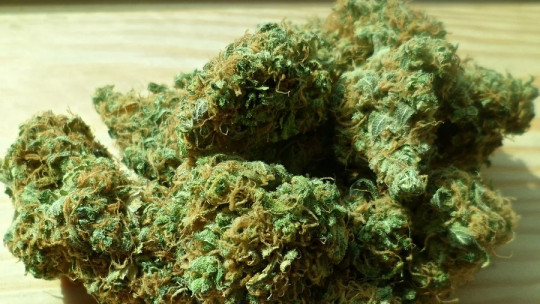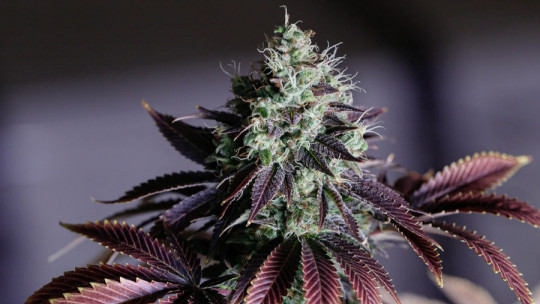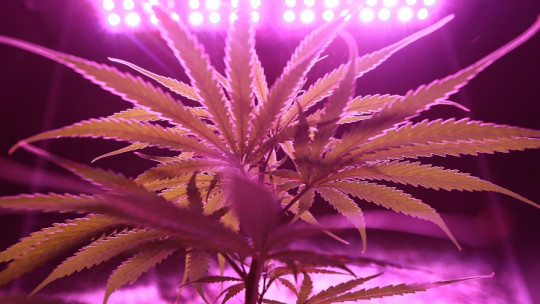Any psychiatrist who has worked in the emergency room will know only too well the large number of people who suffer episodes of psychotic breaks caused by cannabis use. Unfortunately, the vast majority of marijuana consumers are unaware of the true risks of frequent consumption.
As cannabis use becomes more common, it is crucial to understand the associated risks, including the possibility of developing psychotic symptoms.
We will delve into the causes of cannabis psychosis we will identify your symptoms and explore available treatment options.
What is cannabis psychosis
Cannabis psychosis is a state where cannabis use takes you on a not exactly pleasant mental journey, where reality is distorted in ways that can be deeply disturbing.
It’s not simply having a “bad” or uncomfortable experience; It is finding yourself in a mental territory where things do not work as they should. Imagine that your mind is a GPS that suddenly starts giving you completely wrong directions, taking you down paths you don’t recognize, showing you things that aren’t there and making you believe in realities that are totally false.
Symptoms of cannabis psychosis include hallucinations , those sensory perceptions that have no basis in reality. You can see, hear, smell, or feel things that simply don’t exist, except in your mind.
Then there are the delusions , beliefs firmly held in things that have no meaning or foundation in the real world. It’s like being convinced that you are a character from a science fiction novel living among us.
Disorganized thoughts make following a coherent line of thought a Herculean task, and paranoia makes you feel like the protagonist of a thriller, where everyone seems to be against you.
Now, how common is it to fall into this mental labyrinth? The studies shed some light on the subject. Research published in prestigious journals such as The Lancet Psychiatry indicate that the risk of developing cannabis psychosis is significantly magnified with frequent use of cannabis, especially if the varieties consumed are high in THC potency.
For example, Daily cannabis use can increase the risk of experiencing a psychotic episode up to three times , compared to someone who has never touched the plant. And if we talk about varieties with high levels of THC, that risk increases even more.
This is not a minor issue, considering the growing access and legalization of cannabis in various parts of the world. While some celebrate the plant’s availability for recreational and medicinal uses, these studies remind us that cannabis is not without risks, particularly for those with a genetic predisposition to mental health problems.
It is crucial, then, to approach cannabis use with an informed and cautious approach. Ignoring the associated risks, especially the potential to trigger conditions such as cannabis psychosis, is playing Russian roulette with your mental health.
Education, moderation and attention to warning signs are essential for those who choose to use cannabis, as well as for society at large, which must promote a clear understanding that, although natural, cannabis is not a harmless substance.
Can smoking marijuana cause psychotic breaks?
Smoking marijuana and the appearance of psychotic breaks is like running through a minefield where some have more detailed maps than others due to their genetics, and where the mines are more potent depending on the amount of THC the weed contains. Yes, marijuana use can cause psychotic breaks, but not everyone who steps on the field is going to detonate a mine. There are several factors at play, and let’s break them down.
1. Genetic factors
Imagine that your genes are like a lottery in which some tickets increase the chances of experiencing psychotic effects from using cannabis.
Not everyone has the same risk ; For those with a genetic predisposition to disorders such as psychosis, smoking marijuana can be like playing Russian roulette with your mental health. That is, if there are stories of psychotic disorders in your family, the chances of hitting the jackpot (and not exactly the good one) increase if you decide to consume cannabis.
2. Varieties with higher THC
Not all cannabis is the same. Strains with high levels of THC are like more powerful rockets capable of launching you straight into the stratosphere of psychosis faster than strains with less THC.
Studies have shown that the risk of experiencing psychotic breaks increases significantly with the consumption of these potent strains. It’s like comparing a shot of beer with a shot of absinthe; The effects are considerably different.
3. High level of consumption
Here we enter “how much is too much” territory. According to some studies, smoking marijuana daily can increase the risk of developing cannabis psychosis by 20 to 50%. It’s like speeding down a highway: the harder you step on the accelerator (or the more frequently you consume), the more risks you run. This increased risk is especially concerning for those who make cannabis use a daily routine, transforming what could be a recreational practice into an open invitation to serious mental health problems.
In short, yes, smoking marijuana can cause psychotic breaks especially in those with a genetic predisposition, who consume varieties with high levels of THC, or who do so frequently.
The key is to understand the risks, know your own personal risk (hello, genetics!) and make informed decisions about consumption. As with everything, information is power, and in this case, it can be the difference between enjoying life and finding yourself navigating turbulent waters without a lifeguard.
Symptoms of cannabis psychosis
Can cannabis psychosis be cured?
The question of whether cannabis psychosis can be cured is like asking if you can fix a cell phone that has been dropped into water. The answer is: it depends, but there is hope. The key is to act quickly and appropriately. Let’s break this down.
First, it is crucial to understand that cannabis psychosis, like any other type of psychosis, is a complex state that profoundly affects a person’s perception of reality. Treatment and recovery depend on several factors including the severity of symptoms, individual response to treatment and, very importantly, cessation of cannabis use.
Treatment usually combines antipsychotic medication , which can help relieve symptoms such as delusions and hallucinations, with psychological therapy, which works on understanding and managing the condition. Additionally, ongoing support, both professional and from loved ones, plays a crucial role in the road to recovery.
Now, about the cure: if by “cure” we mean the complete and permanent disappearance of all symptoms, then things get complicated. Some people experience single episodes of cannabis psychosis that, with treatment and without returning to cannabis use, may not recur. In these cases, we could speak of a “complete recovery.”
However, for others, especially those with underlying risk factors for psychotic disorders, Cannabis psychosis could be an indicator of deeper vulnerabilities to long-term psychotic conditions
It is essential to recognize that the “cure” not only involves treating the present symptoms, but also addressing risk factors, such as continued cannabis use. Quitting smoking marijuana is a critical step toward preventing future episodes.
In summary, cannabis psychosis can be manageable and, in many cases, People can recover significantly with proper treatment and lifestyle changes.
The “cure,” in terms of preventing recurrence, involves a combination of medical interventions and personal changes, including cessation of cannabis use. As with any wet electronic device, the sooner it is intervened and the more carefully it is handled, the better the result.
Treatment of cannabis psychosis
Treating cannabis psychosis is like embarking on a journey of recovery that requires a detailed map, a precise compass, and sometimes the patience of a monk.
It’s not just taking a pill and hoping everything magically works itself out; It is a multifaceted process that addresses both the acute symptoms and the underlying causes. Let’s see how this journey unfolds:
1. Identification and accurate diagnosis
The first step in the treatment of cannabis psychosis is an accurate diagnosis. This may require a complete psychiatric evaluation including medical history, substance use, and a discussion of the symptoms experienced. As if we were detectives, mental health professionals look for clues to understand the nature of the problem
2. Cessation of cannabis use
This is the foundation on which the entire treatment is built. Continuing to use cannabis can perpetuate or exacerbate psychotic symptoms, so hanging up the gloves and saying goodbye to consumption is crucial. It can be challenging, especially if dependency is involved, but it is a non-negotiable step toward recovery.
3. Management of acute crisis
If symptoms are severe and there is a risk to the patient or others, treatment in a controlled environment, such as a hospital, may be necessary. Antipsychotic medication may be administered to quickly relieve symptoms such as delusions and hallucinations. It’s like putting out a fire: the goal is to control the flames as quickly as possible to prevent further damage.
4. Long-term antipsychotic medication
Once the acute phase is under control, medication can be adjusted for long-term maintenance. The choice of medication and dosage depends on several factors, including the patient’s response and side effects. It is a process of trial and error, seeking the perfect balance that allows the patient to return to their daily activities with the fewest side effects.
5. Psychological therapy
Essential to address underlying causes and teach coping strategies Cognitive behavioral therapy (CBT) is particularly effective, helping patients identify and change patterns of thinking and behavior that contribute to anxiety and paranoia. It’s like reprogramming malicious software in your brain to make it work more efficiently and healthily.
6. Social and family support
The journey of recovery from cannabis psychosis can feel lonely and overwhelming, but with the right support, the burdens are lightened. Family therapy can be beneficial, educating loved ones about the condition and how they can constructively offer support. It is remembering that, although the journey begins alone, it does not have to be continued alone.
7. Rehabilitation and reintegration
Part of the treatment involves helping the patient reintegrate into their daily lives, which may include occupational therapy, educational or employment support, and activities that promote mental and physical health. It’s building a bridge back to “normality” ensuring that it is strong enough to sustain the patient in their new life without cannabis.
8. Relapse prevention
Finally, relapse prevention is a critical component. This may include continued education about the risks of cannabis use, developing coping skills to manage stress without resorting to substances, and maintaining regular follow-up with mental health professionals.









